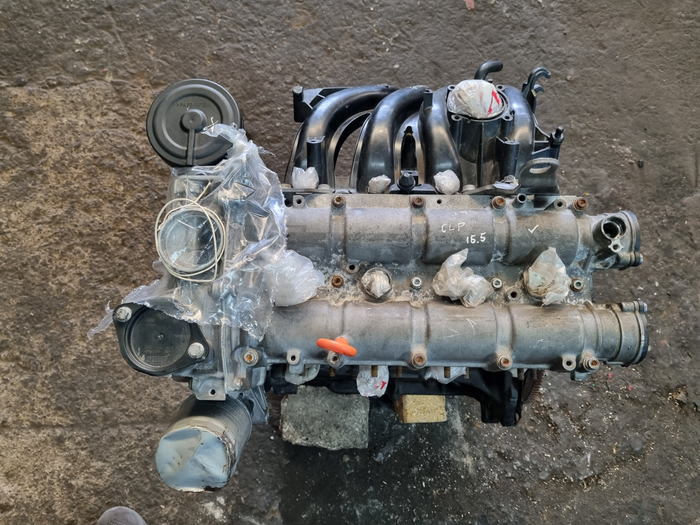Achieve peak performance with a reliable clp engine.
Achieve peak performance with a reliable clp engine.
Blog Article
Exactly How a Clp Engine Can Boost Effectiveness in Different Industries
The introduction of CLP engines notes a considerable shift in operational effectiveness across different industries, driven by their capacity to enhance fuel intake and minimize downtime. Industries such as production and logistics stand to gain considerably from their robust style and consistent power result, which assure to simplify operations and enhance efficiency. As companies increasingly focus on sustainability together with effectiveness, the role of CLP engines ends up being a lot more crucial. What continues to be to be seen is how these improvements will certainly shape the future landscape of commercial operations and their effect on broader financial trends (clp engine).
Summary of CLP Engines
CLP engines, or Continual Liquid Propellant engines, stand for a considerable improvement in propulsion modern technology, particularly for space applications. These engines utilize a constant feed system that permits the sustained expulsion of propellant, leading to enhanced effectiveness and performance contrasted to conventional strong or hybrid propulsion systems. By maintaining a continuous circulation of liquid propellant, CLP engines can attain extra exact drive control, which is essential for steering spacecraft in numerous goal circumstances.
The style of CLP engines integrates advanced products and innovative gas management systems. clp engine. This leads to lowered weight and increased dependability, necessary variables for long-duration room objectives. Moreover, the constant procedure decreases the danger of combustion instability, a common challenge in standard rocket engines.

Benefits in Production
The manufacturing of Continual Liquid Propellant (CLP) engines presents a number of noteworthy benefits that boost both efficiency and cost-effectiveness. Among the main advantages is the streamlined manufacturing process, which decreases the complexity connected with typical propulsion systems. By making use of fluid propellant, makers can accomplish better accuracy in engine performance, leading to optimized energy output and reduced waste.
Furthermore, CLP engines assist in a higher degree of modularity, enabling easier combination right into different production lines. This versatility can dramatically reduce preparations and boost total operational flexibility. Using CLP modern technology likewise often tends to lessen the demand for considerable maintenance because of less moving components, which equates right into lowered downtime and operational prices.

Applications in Logistics
Leveraging Constant Liquid Propellant (CLP) engines in logistics uses significant advantages in operational efficiency and integrity. These engines offer a robust solution for various transport requirements, enabling the seamless movement of items throughout substantial distances. The intrinsic style of CLP engines enables regular power outcome, which equates right into smoother and a lot more foreseeable transportation schedules.
One of the vital applications of CLP engines in logistics is in durable products transport, where they can drive both ground and aerial automobiles. Their ability to maintain high performance under differing tons problems guarantees that delivery timelines are met, therefore boosting client fulfillment. Additionally, CLP engines can be incorporated right into automated logistics systems, helping with real-time monitoring and enhancing route planning.
In addition, the sturdiness of CLP engines lowers maintenance downtime, enabling logistics business to optimize their functional capacities. This is specifically valuable in warehousing operations, where performance in taking care of and transporting products is crucial. As logistics proceeds to advance, the assimilation of CLP engines represents a forward-thinking approach that not just improves efficiency however likewise supports the industry's growing needs for integrity and speed.
Effect On Energy Effectiveness
Exactly How do Continuous Fluid Propellant (CLP) engines improve energy performance in transportation? CLP engines use a regular flow of fluid fuel, maximizing burning procedures and maintaining a stable drive outcome. This design decreases power losses connected with standard burning engines, where gas delivery can differ and result in ineffectiveness.
The continuous procedure of CLP engines enables an extra effective thermal cycle, resulting in higher specific impulse compared to standard engines. clp engine. This translates to reduced gas usage for the same quantity of work done, significantly lowering operational costs throughout various transportation fields, including aeronautics and maritime markets
Furthermore, the ability of CLP engines to maintain optimal efficiency under differing lots conditions Resources decreases the demand for frequent acceleration and slowdown, even more boosting gas effectiveness. Improved power efficiency not only adds to set you back financial savings however also brings about lower greenhouse gas exhausts, aligning with international sustainability objectives.
Future Trends and Innovations
Arising innovations in Continual Fluid Propellant (CLP) engine innovation promise to transform the landscape of transportation performance and sustainability. As sectors pivot towards greener options, CLP engines stand at the forefront, integrating ingenious products and layout approaches that enhance efficiency while lessening environmental influence.
One of the most appealing official website trends is the fostering of crossbreed systems that combine CLP engines with renewable resource resources. This harmony can enhance gas usage and minimize emissions, lining up with international sustainability objectives. Innovations in computational fluid characteristics (CFD) are helping with the style of even more aerodynamically effective engines, leading to decreased drag and boosted gas efficiency.
Moreover, the advancement of wise tracking systems is readied to improve operational effectiveness. These systems utilize data analytics and IoT technology to optimize engine efficiency in real-time, making sure that the engines run within their most effective parameters.
As research study remains to check out different propellant formulas-- such as biofuels and synthetic fuels-- the future of CLP engines looks promising. By utilizing these innovations, sectors can not just improve their efficiency however also contribute considerably to a cleaner, a lot more sustainable navigate here future in transport.
Final Thought
Finally, CLP engines stand for a considerable innovation in effectiveness throughout multiple sectors. Their capability to maximize gas usage and decrease operational expenses, incorporated with a continuous feed system, enhances power result and operational dependability. The combination of sophisticated materials and less relocating components decreases upkeep demands, while alignment with sustainability goals positions CLP engines as a pivotal modern technology for the future. Proceeded advancement in this area assures further improvements in efficiency and ecological performance.
Report this page